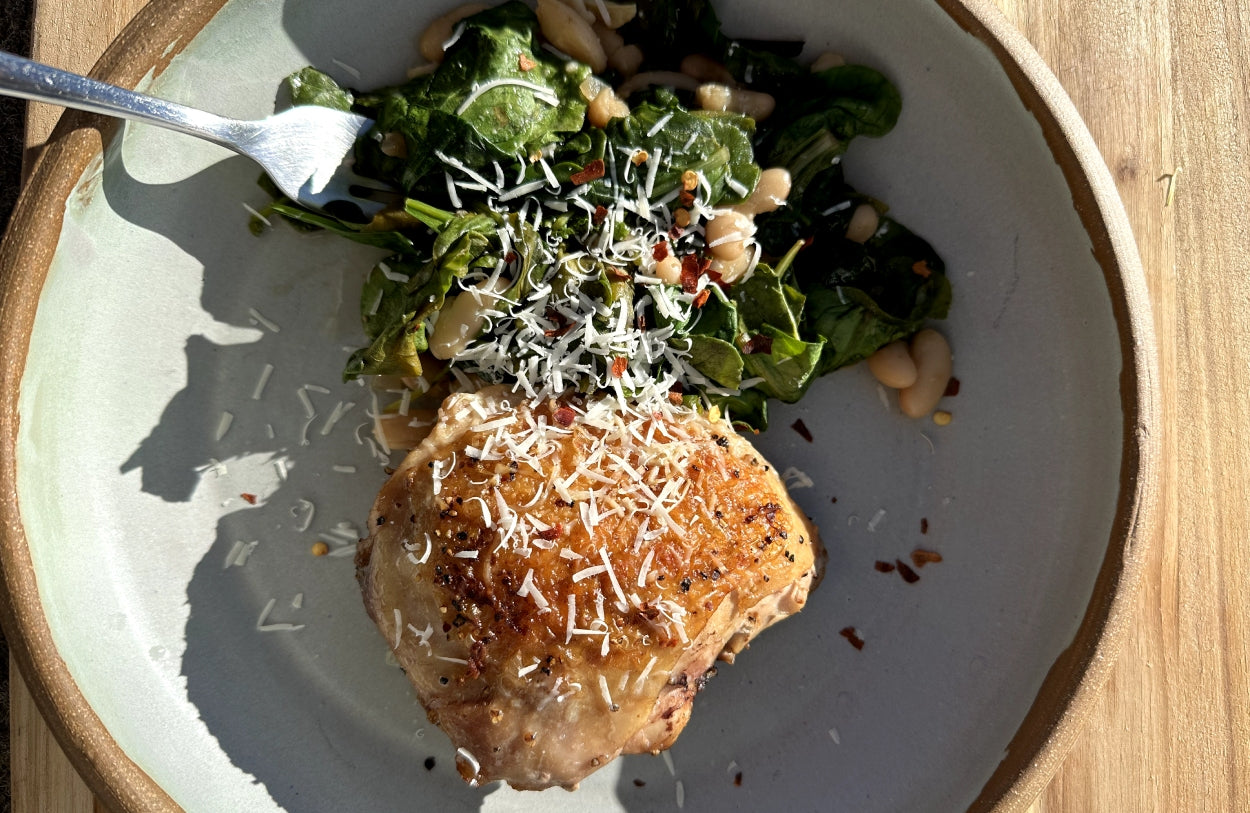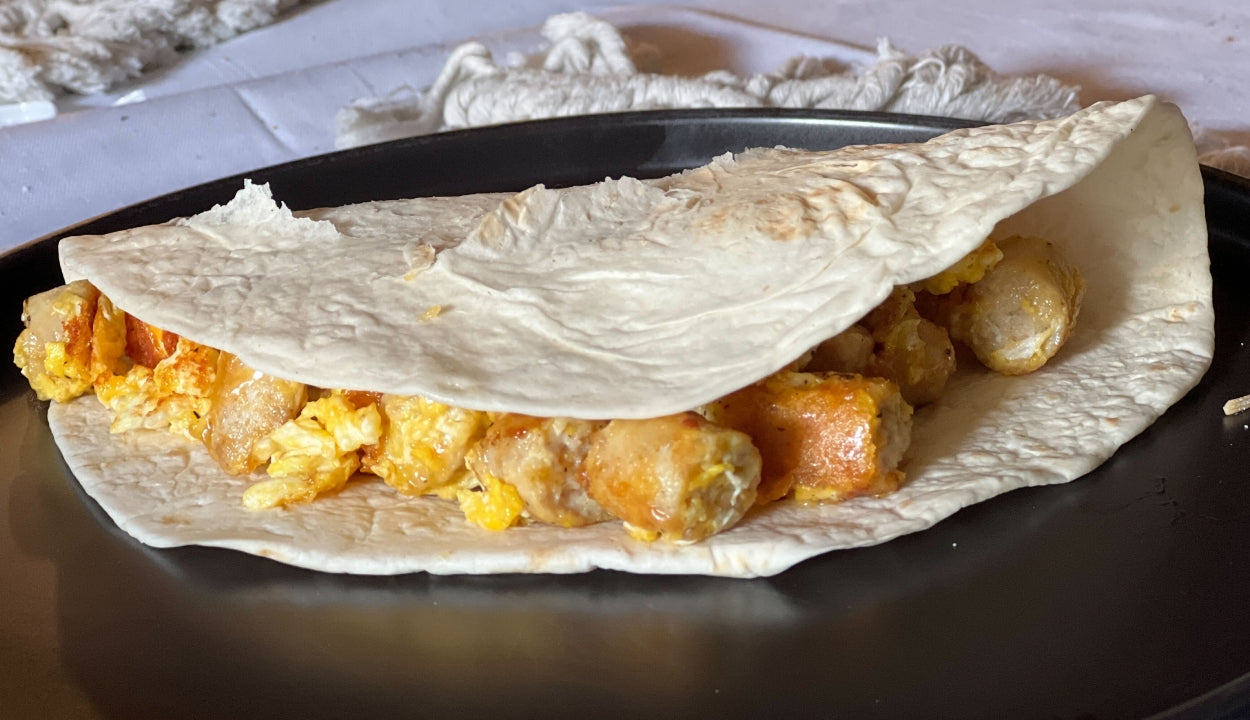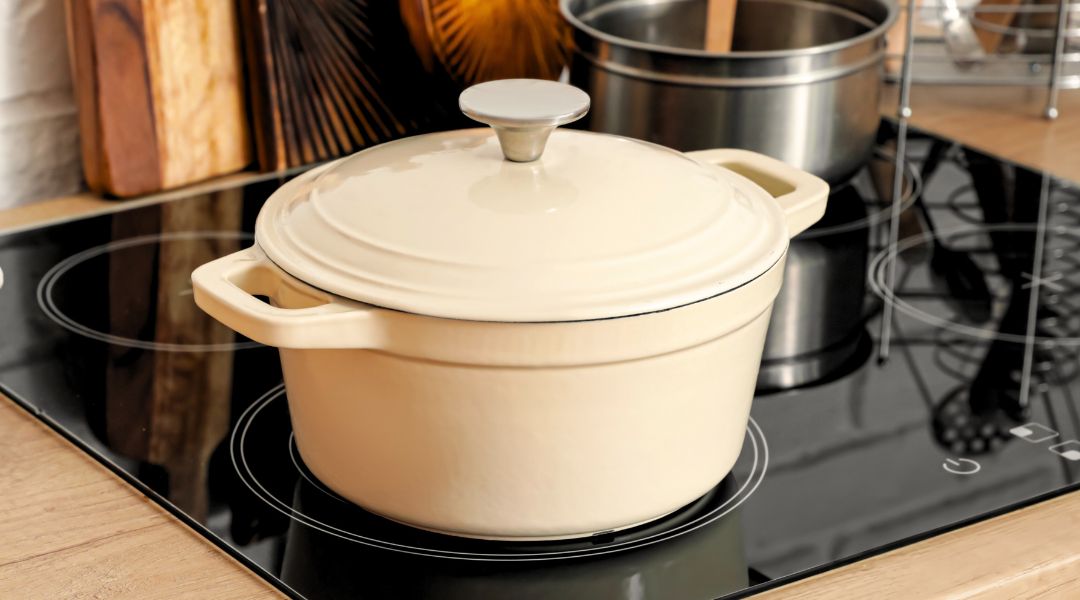Debunking The Grain-Free Myth

Ever heard of a chicken “break-down?” Not a breakdance, break-down. It’s when you “break down” some important and complex facts about raising and eating chicken. Like our pun? Maybe not. But give us some credit, we did just now coin the phrase—largely because a lot of folks have been asking why our pasture-raised chickens are given feed. So, here we go. Your official chicken break down…
Chickens can’t live on grass alone.
Grass Roots farmers raise chickens on pasture because it’s the best environment for the birds—natural and clean, with the freedom to roam and graze. Additionally, grasses and legumes are full of nutrients. Clover, for example, is high in protein. But monogastric (one stomached) organisms like chickens, aren’t built to survive on pasture alone. They need other sources of nutrients. Which is why they are particularly fond of the protein-rich insects and seeds housed in the pasture. The grass makes a perfect home and bed, but it’s not their only source of nutrition.
Cows and sheep are ruminants with stomachs designed to digest complex plants, like grasses. Their multiple stomachs allow them to properly break down grass, and absorb the nutrition from the cellulose. Chickens, on the other hand, can’t break down the nutrition from the grass on which they live.
Diverse food does a bird-body good.
Chickens are omnivores—plants, seeds, bugs…they eat it all. Omnivores need a diverse diet, which is why pasture-raised chickens living on grass need a little help from their farmer friends. At certain times of the year—late spring and early summer, in many climates—fields are full of bugs and seeds from sprouting grasses. During this peak pasture season, chickens are able to forage for a significant portion of their diet. But when bugs and seeds are hard to find, it’s especially critical that chickens receive supplemental food—packed with vitamins, minerals, and protein—to stay healthy.
Digesting grains is easy, when you’re a chicken.
Thanks to their gizzards, chickens are able to easily breakdown nutrient-rich supplemental feed - Grass Roots farmers use to ensure well-balanced meals for their birds. Ruminants—cows and sheep—have no such organ, which makes grains harmful for their digestive system. Grass Roots farmers are committed to raising healthy animals in tune with nature, which is why we embrace species-appropriate diets for each herd and flock.
Our steers and sheep are 100% grass fed and finished and never receive any grain. We have two supplemental feed options for our poultry - one contains GMO-free, custom-mixed rations made with local oats, corn and soy, another contains milo, alfalfa meal and kelp, so that they thrive, even with forage is slim.
And that’s your chicken breakdown. Still got questions? Contact Us.
Recent Posts






